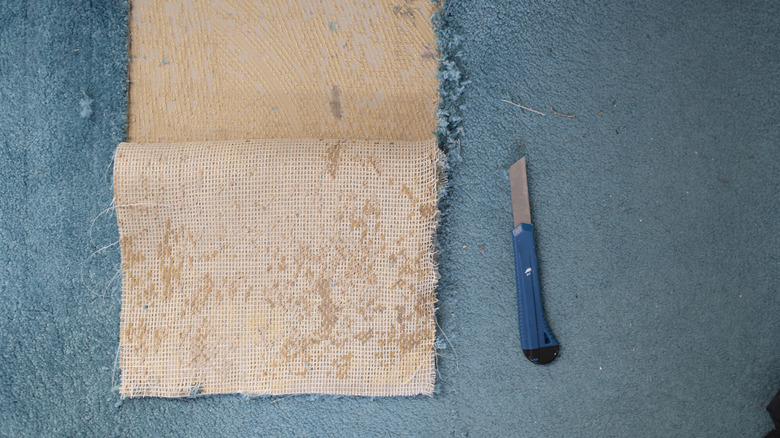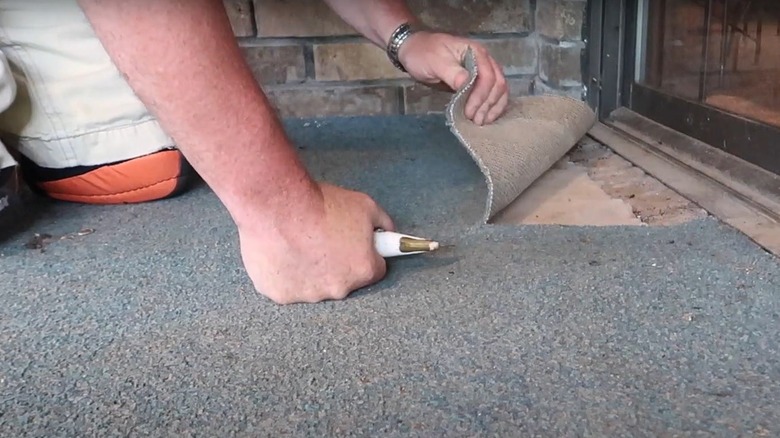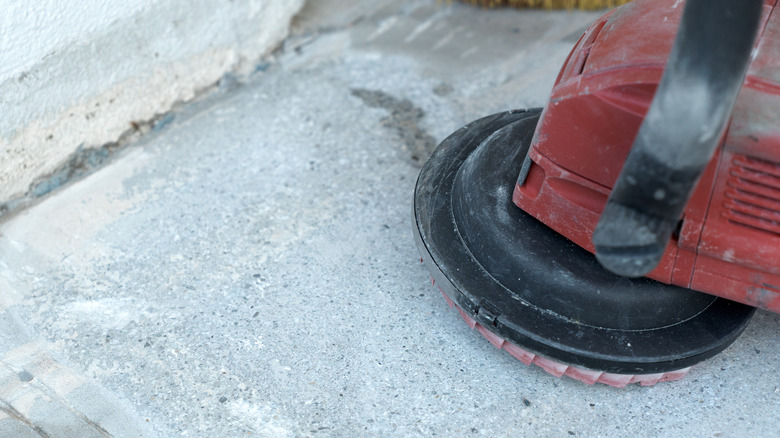Refresh Your Patio By Removing That Disgusting Carpet. Here's How
We may receive a commission on purchases made from links.
Although using carpet on a patio or enclosed porch offers some advantages compared to bare concrete, if you don't use the highest quality material, it could deteriorate quickly from weather exposure. If so, no matter how much you clean your indoor-outdoor carpet, it eventually will look pretty gross. If you're ready to pull up this carpeting so you can pick flooring for your porch that stands up better to weather exposure, you need to figure out how to remove the old carpeting fully, including any glue that's firmly attached to the concrete.
To do the process correctly, you'll need some tools and products on hand. A long-handled floor-scraping tool or a broad-blade putty knife may be necessary to rip the carpet free from the glue. You may want knee pads to help with kneeling on the floor to work on the material more comfortably. Having a sharp utility knife on hand is important to simplify cutting the carpeting into segments for removal. You may need an adhesive removal product to help you pull any old adhesive away from the concrete.
If this job sounds like it's too much work for you to handle on your own, you do have the option of hiring a pro. The cost to pull up carpeting in your home usually is $1 to $2 per square yard, although you could pay as much as $5 per square yard if the indoor-outdoor carpeting has quite a bit of stubborn glue residue.
Steps to remove the indoor-outdoor carpeting from the concrete porch or patio
The first step in removing carpet is to use a utility knife with a sharp blade to cut the segment of carpeting into sections. Although it may seem easier to try to pull up the entire carpet in a single roll, this can require quite a bit of strength for a large layout. Carpeting can weigh between 0.5 and 2.2 pounds per square foot, so a 10-by-10-foot segment of carpet could weigh up to 220 pounds. This type of weight is difficult to handle in a large chunk. Pulling away smaller segments simplifies the removal process, but it will take longer to make the cuts for the narrower segments. Typically, cutting in widths of 2 to 3 feet should give you a size that's easy to handle.
Start by just trying to pull the carpet. If the glue is old, it may be loose enough to simply pull away. If the adhesive is still tight, try pouring boiling water on the carpet – carefully — to loosen it. If you have a portable steam cleaner, you can use it on the old carpet to heat and soften the adhesive underneath. Once the adhesive is softened, use a floor scraper to go under the carpet to try and peel the material and glue together. Using firm, even pressure can make it easier to remove both items at the same time.
How to remove stubborn glue from the concrete patio
Once you pull away the sections of old carpeting, you may still have old adhesive on the concrete patio. If the old adhesive is chunky, it may affect your ability to put down a new type of flooring. You need to remove the old glue to reach the bare concrete. If you poured boiling water on the carpet earlier, and that seemed to soften the old glue, you can try more boiling water on chunks of leftover glue. Use a floor scraper to try to pull it away after it softens.
If those other options do not work, you can apply a chemical adhesive remover to the spots that still have adhesive. Make sure you follow the instructions for the product, which may require you to leave it in place for a few minutes. These substances can be dangerous to use, so you may want to wear a mask, gloves, and other protective clothing. One of the highest-rated adhesive removers on Amazon is Goo Gone Pro-Power, which costs around $16 for 32 fluid ounces.
As a final option for the most stubborn glue, you can use a machine like a floor grinder that's made for concrete. This can be a difficult DIY job, as applying too much force can cause permanent marks in the concrete, which you want to avoid if you are not planning to cover the concrete with another type of flooring.


